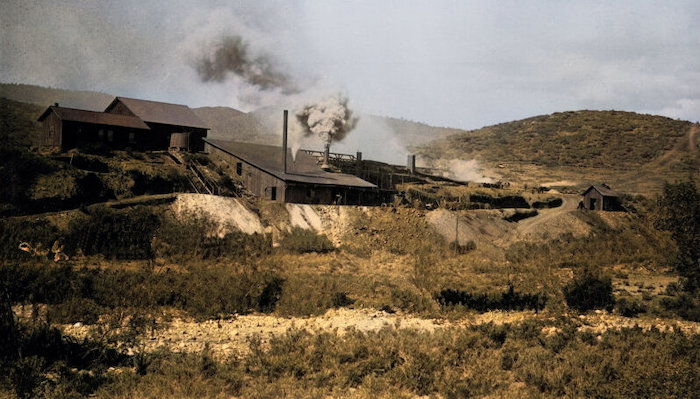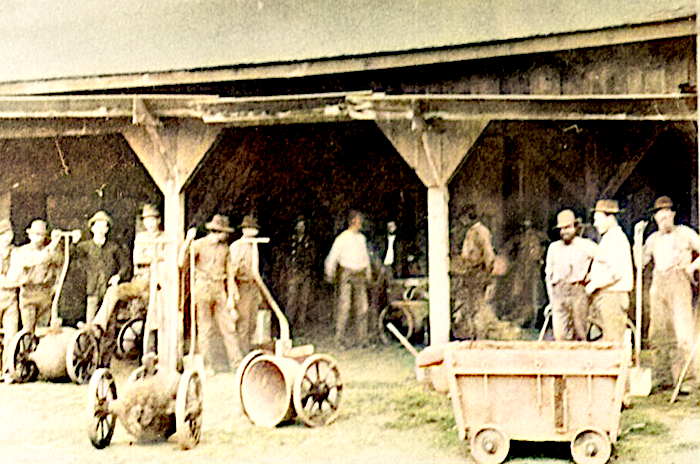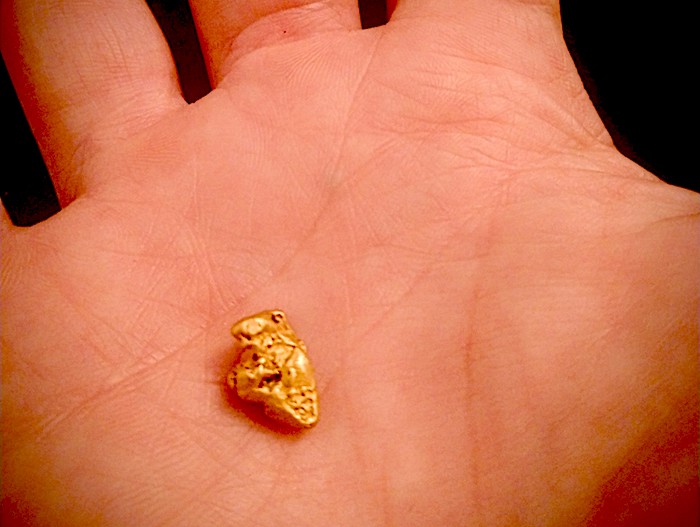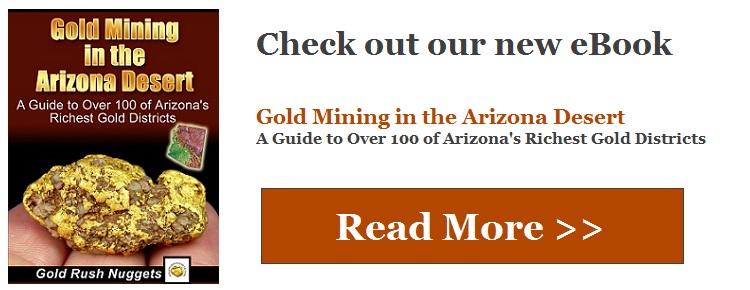The Big Bug Mining District is a historic mining area situated in the Bradshaw Mountains of Central Arizona. The region gained attention for its rich gold deposits, but copper, silver and lead were also mined in the region.
The town of Big Bug was established when gold placers were discovered at Big Bug Creek around 1862. The gravels hid coarse placer gold, easily recoverable by pan and sluice.
Early development of the town wasn’t easy. Not long after white men arrived and started mining, local Apache Indians discovered the site and attacked the few men that were working the ground.
Eventually a handful of different mines were established near Big Bug and in the surrounding mountains. Several copper deposits were worked at depths of several hundred feet.

The Blue Bell is one of the larger mines in the area. It was owned by the Consolidated Arizona Smelting Company. It plunges to a depth of 1200 feet.
The Big Bug Mine was a gold/silver/copper mine that was fully active in 1884. Six years later, the mines name was changed to Henrietta Mine in honor of the actress Henrietta Crossman, a pinup girl.
Other mines within the Big Bug District were the Boggs Mine, French Lily Mine, Silver Belt, and Little Jessie Mine.
The town never grew to a massive size, but by 1890 there were approximately 110 people living in Big Bug and working at the surrounding mines. There were a few saloons, general store, barber, boarding house and stage station.

By 1900, Big Big was all but abandoned as the gold placers along Big Bug Creek has been exhausted and the copper mines had become unprofitable. Many of the copper mines came back into production at the start of World War 1 to supply copper to the war effort.
The Great Depression brought renewed interest to mining on Big Bug Creek. The region had been essentially ignored for decades, but the lack of jobs and opportunities in the early 1930s brought men back into the hills to search for gold.
Along Big Bug Creek, they found gold in areas that had already been worked previously. While the easy gold was long gone, the amount of overburden and large boulders had hidden rich deposits that miners ignored in the original rush to the area. In 1932 a crew of miners were recovering as much as $300 per week, including some coarse nugget gold.
Production reports from Big Bug Mining District are very poor and likely not accurate. At least 50,000 ounces of gold were mined in the later years, but there’s no good indication of how much gold those early miners found back in the 1860s.
There’s not much left of the original town. A trained eye can still see rock piles and tailings from the early mining that took place along the creek so long ago.
There are still some miners in the area prospecting for gold. Gold can still be found in the area, although not rich enough to sustain large efforts. Panning, sluicing and dredging on Big Bug Creek can still turn up nice gold. There are some mining clubs in the area that have active claims open for casual prospecting if you are a member.

NEXT: Explore 14 of Arizona’s Oldest Copper & Gold Mining Camps








